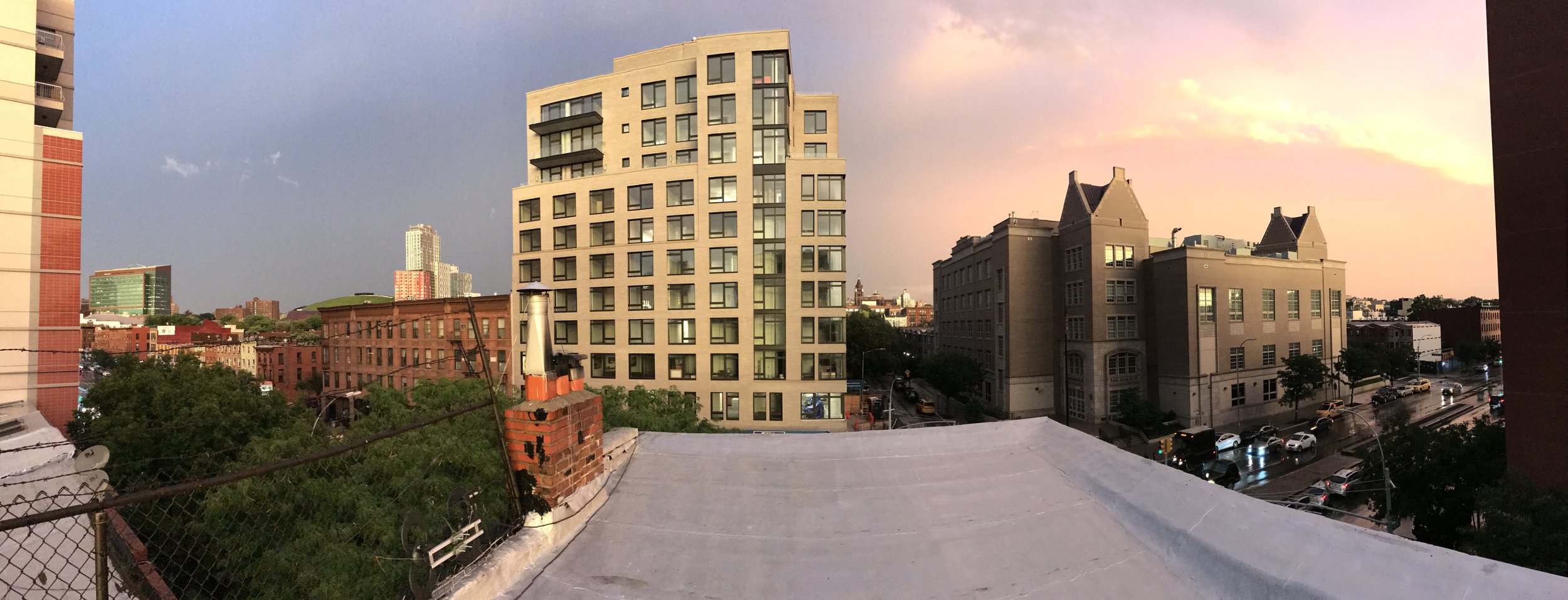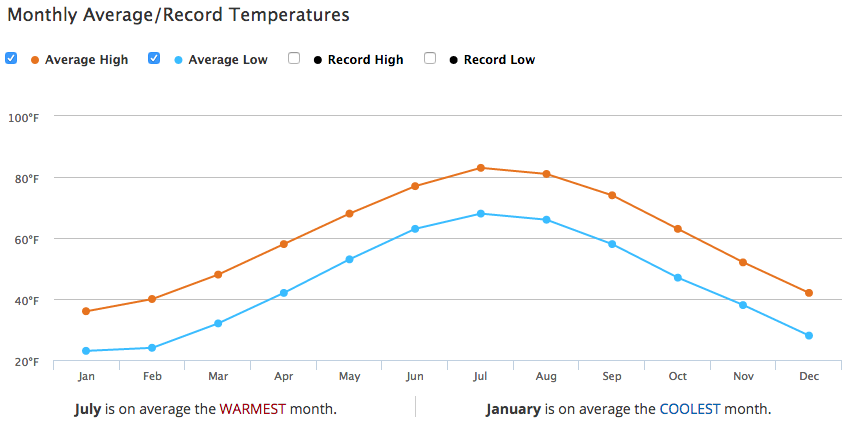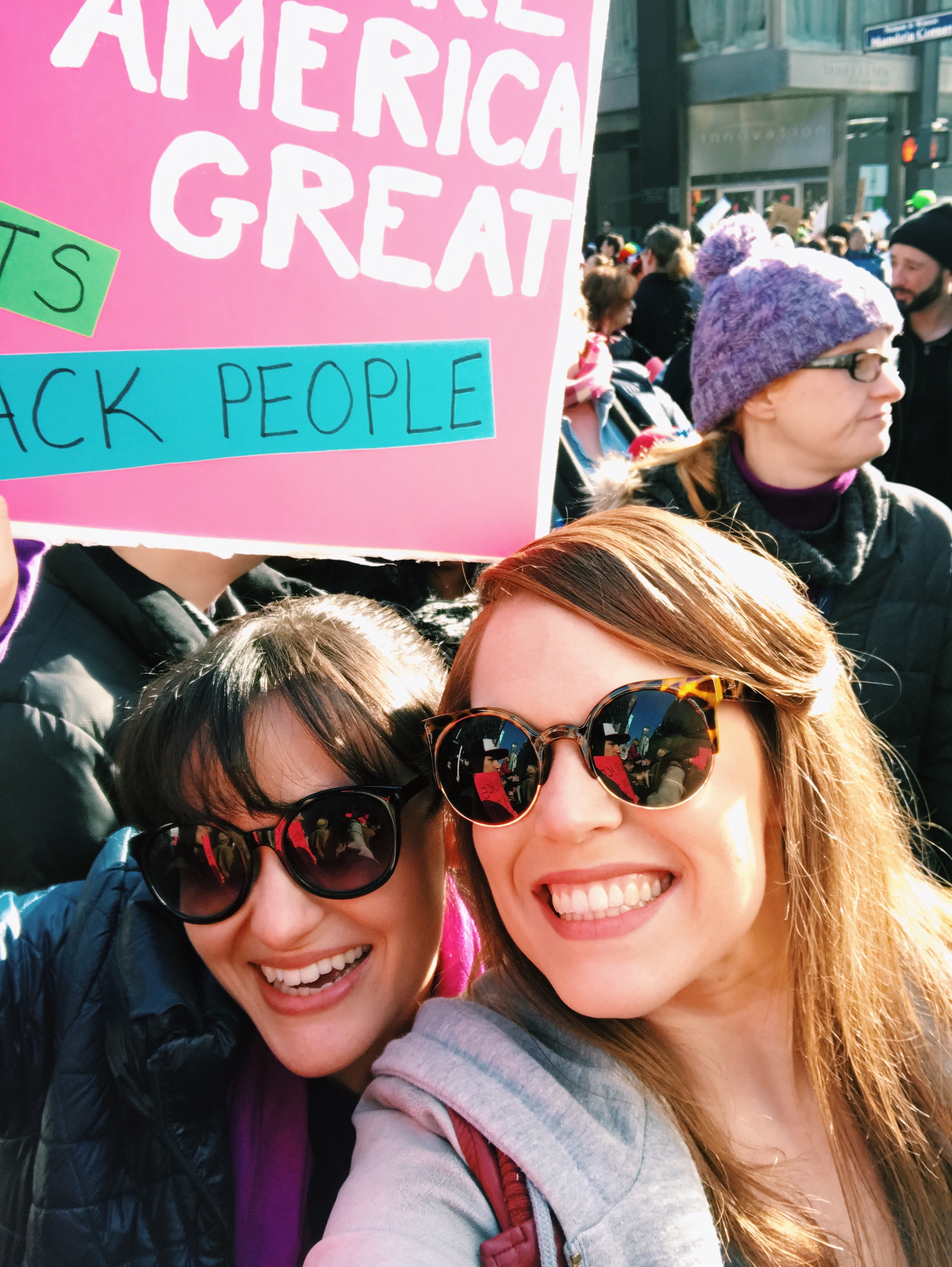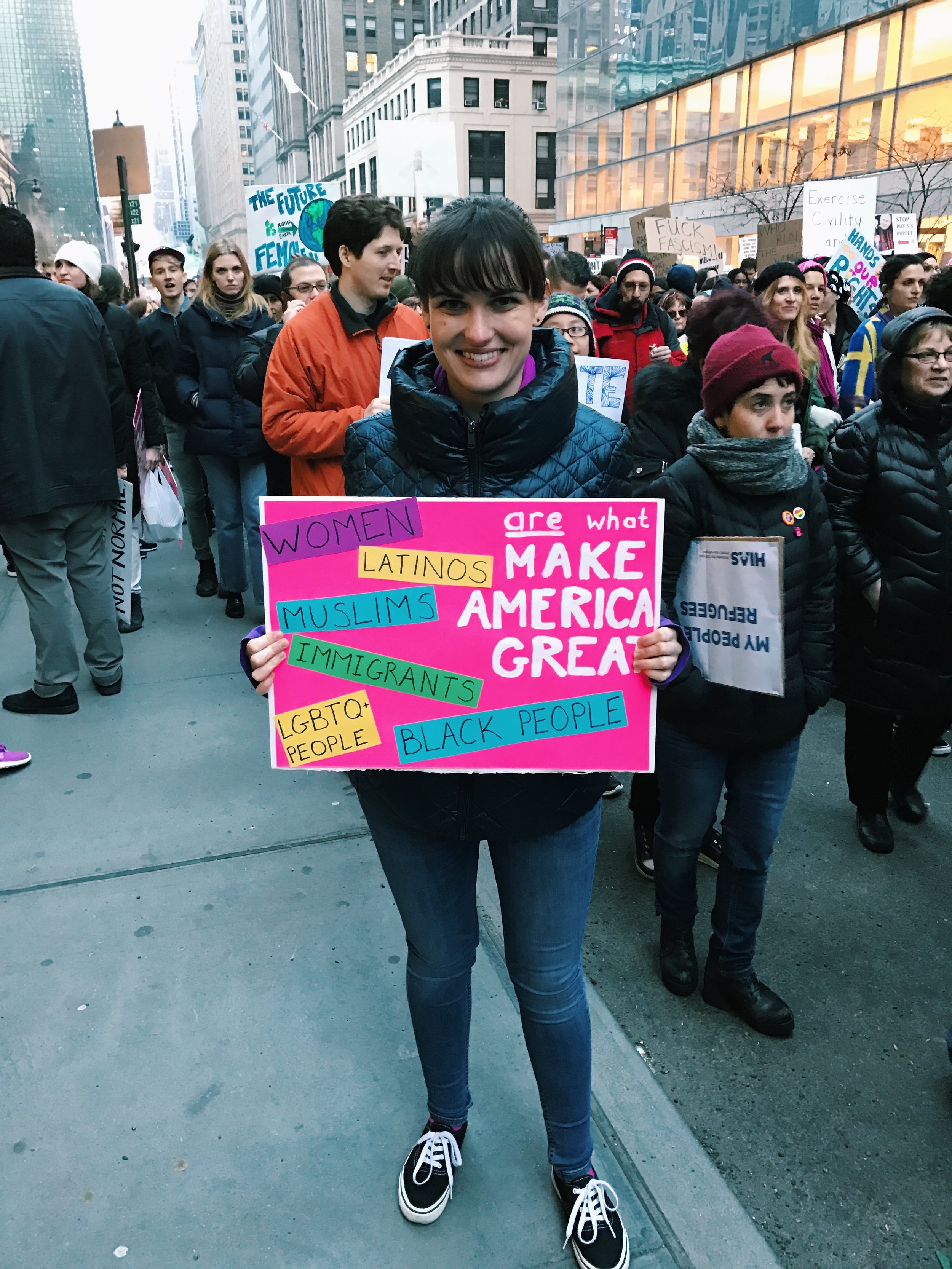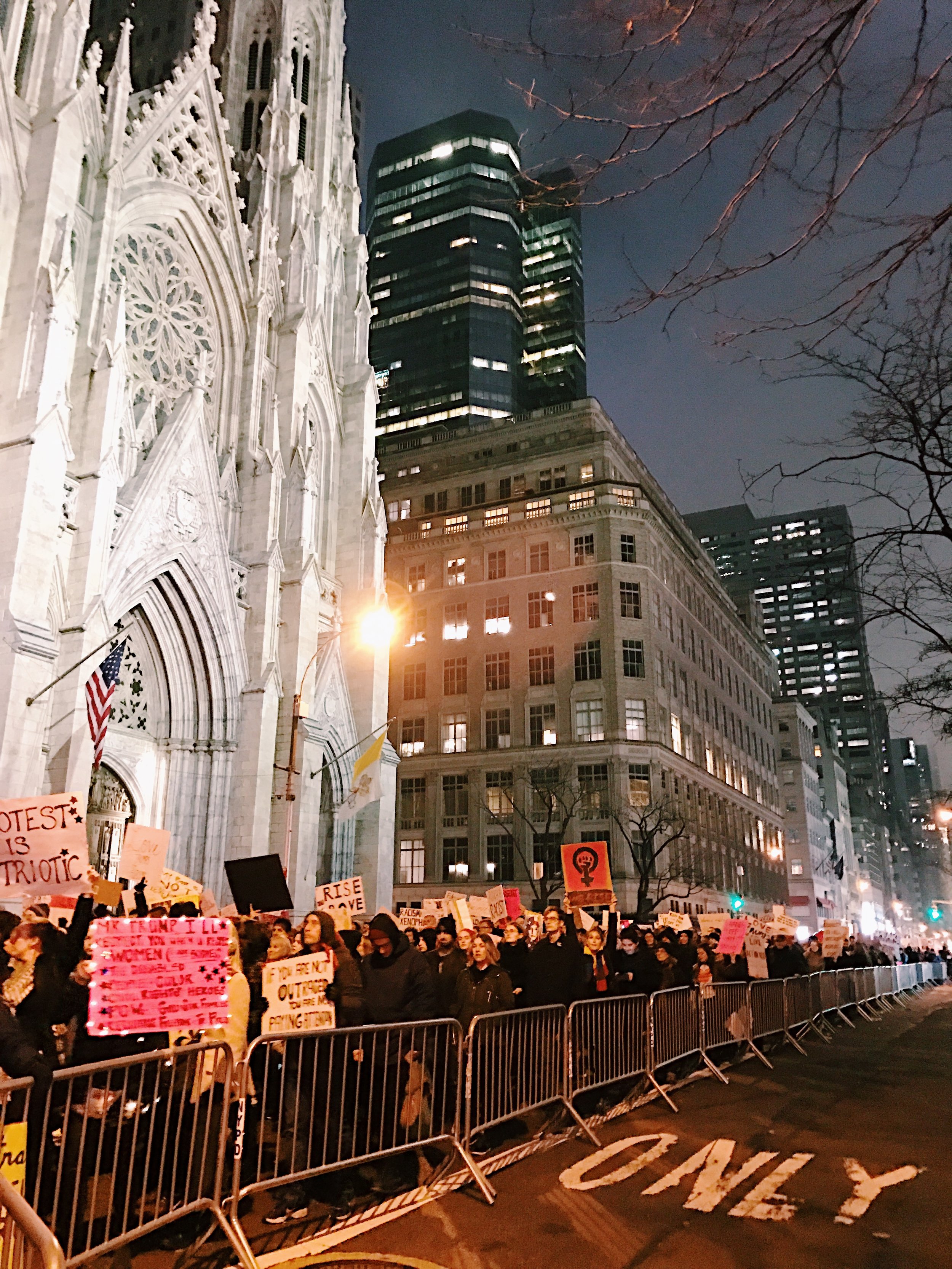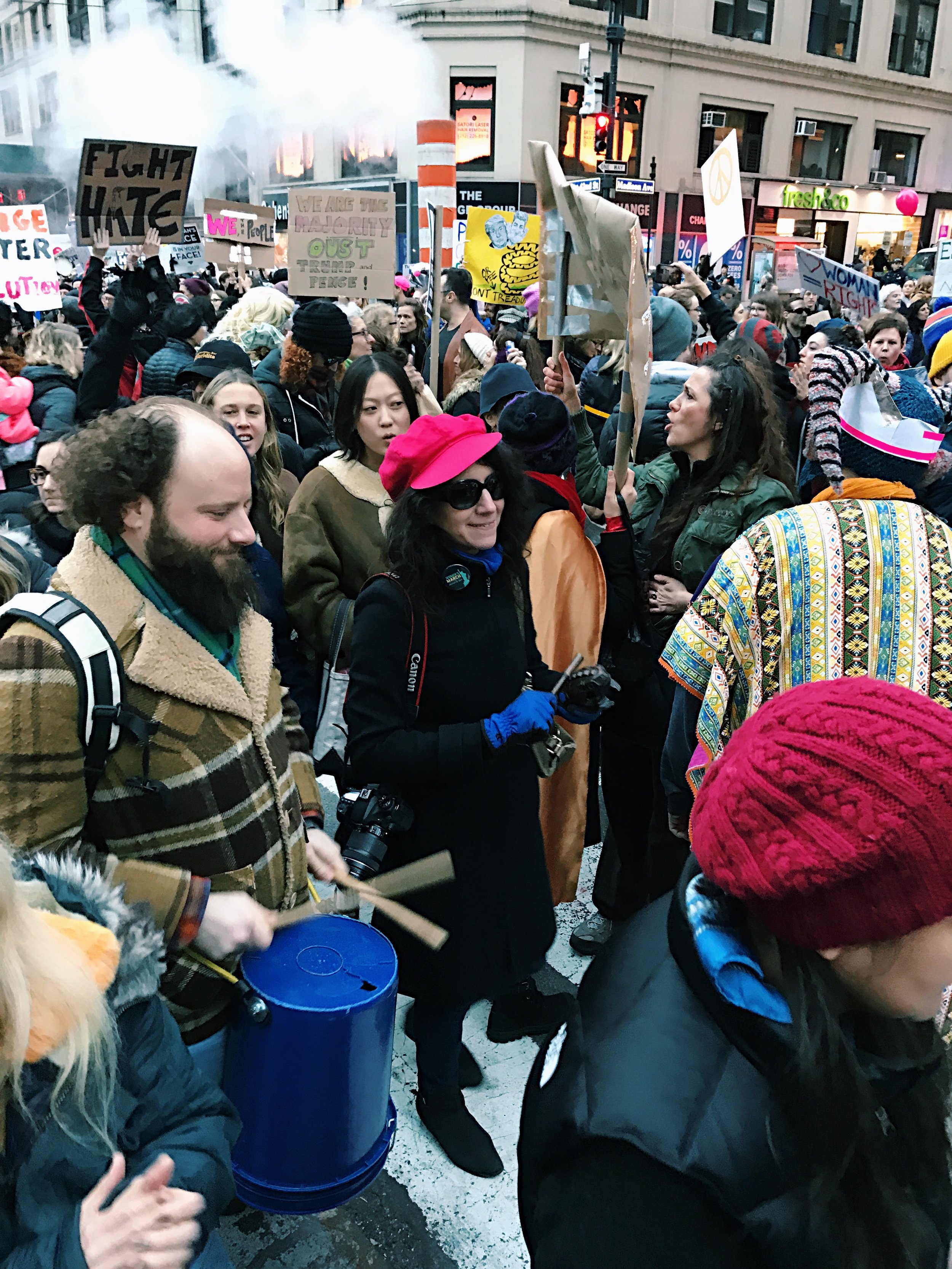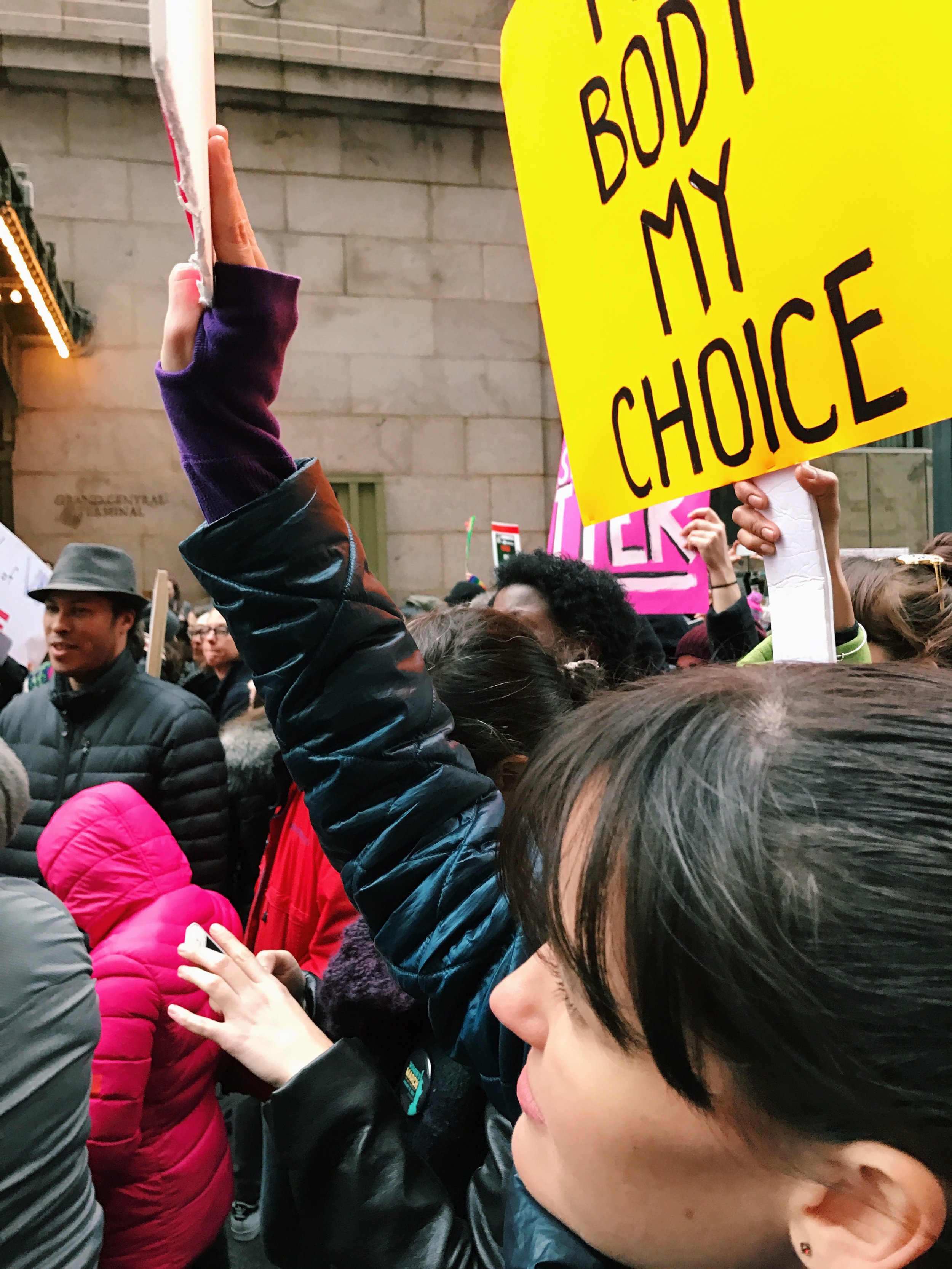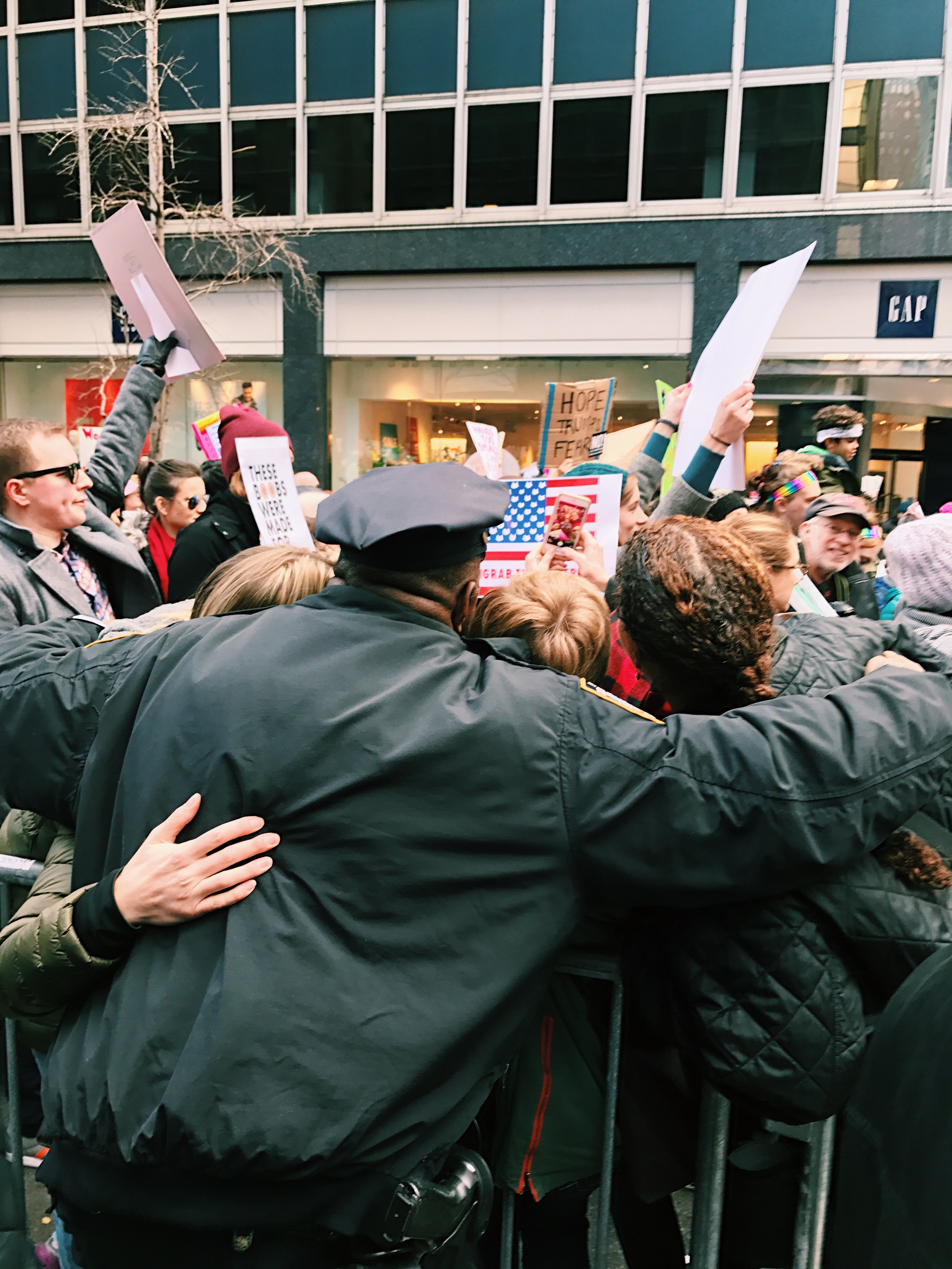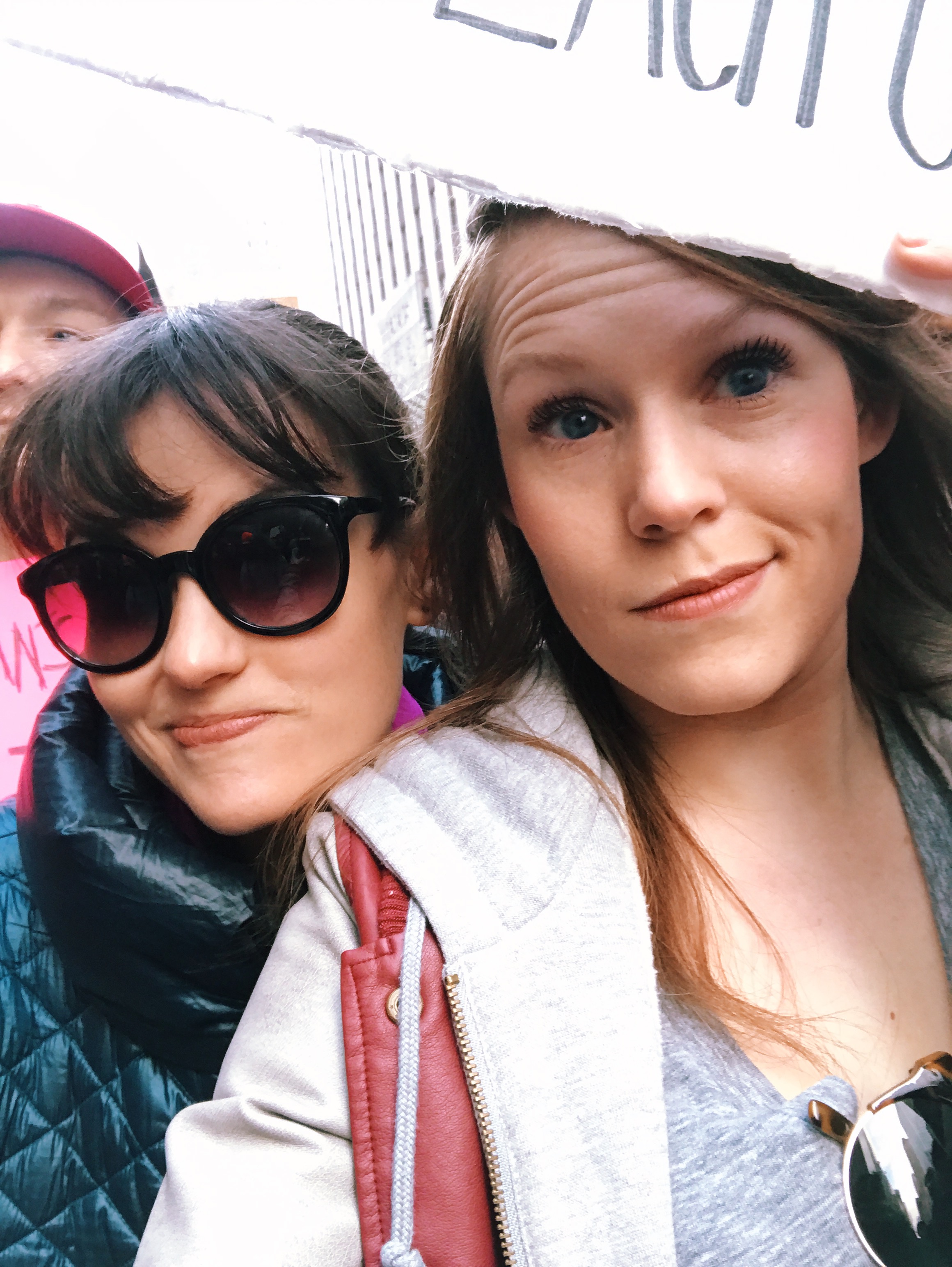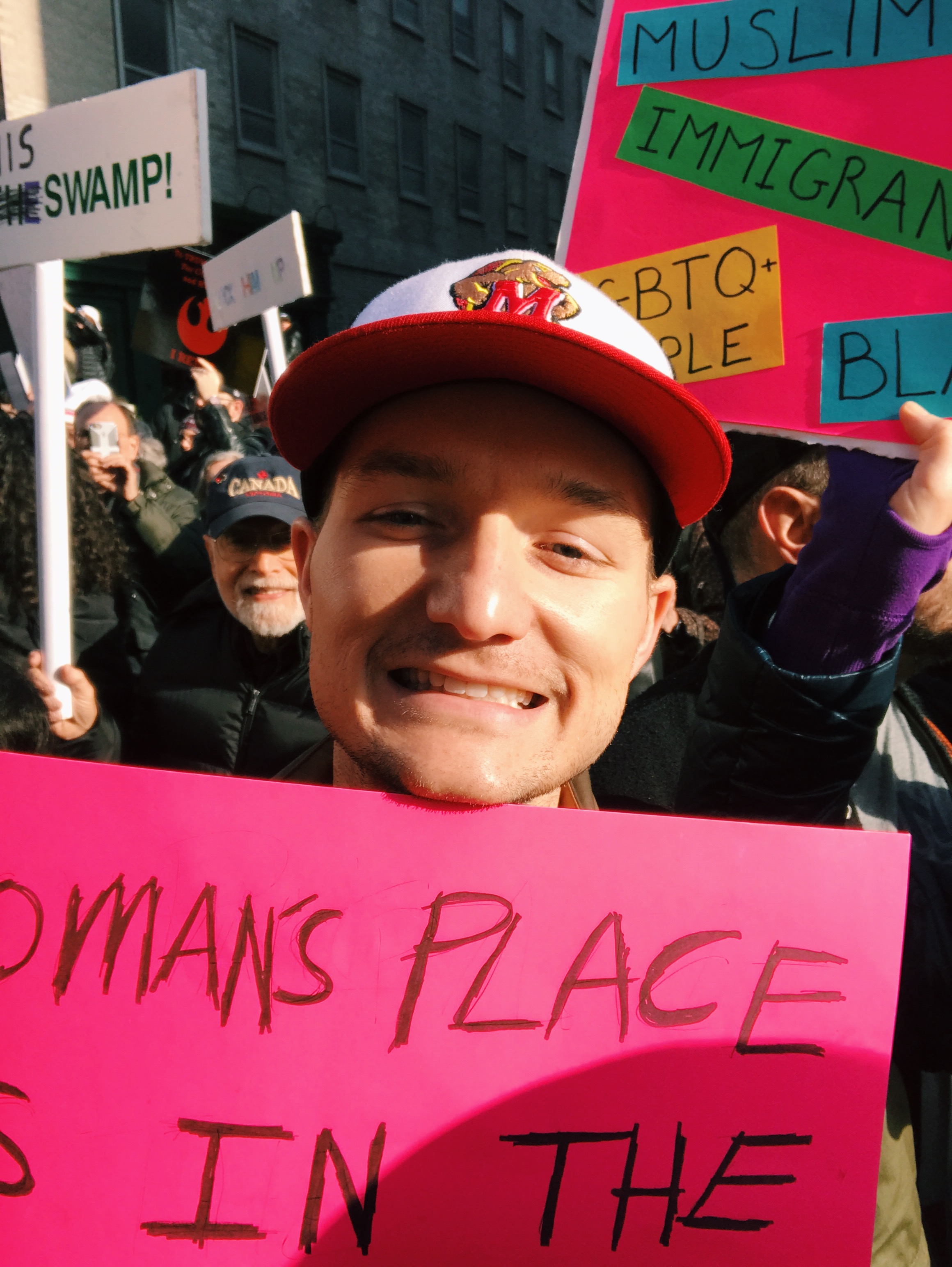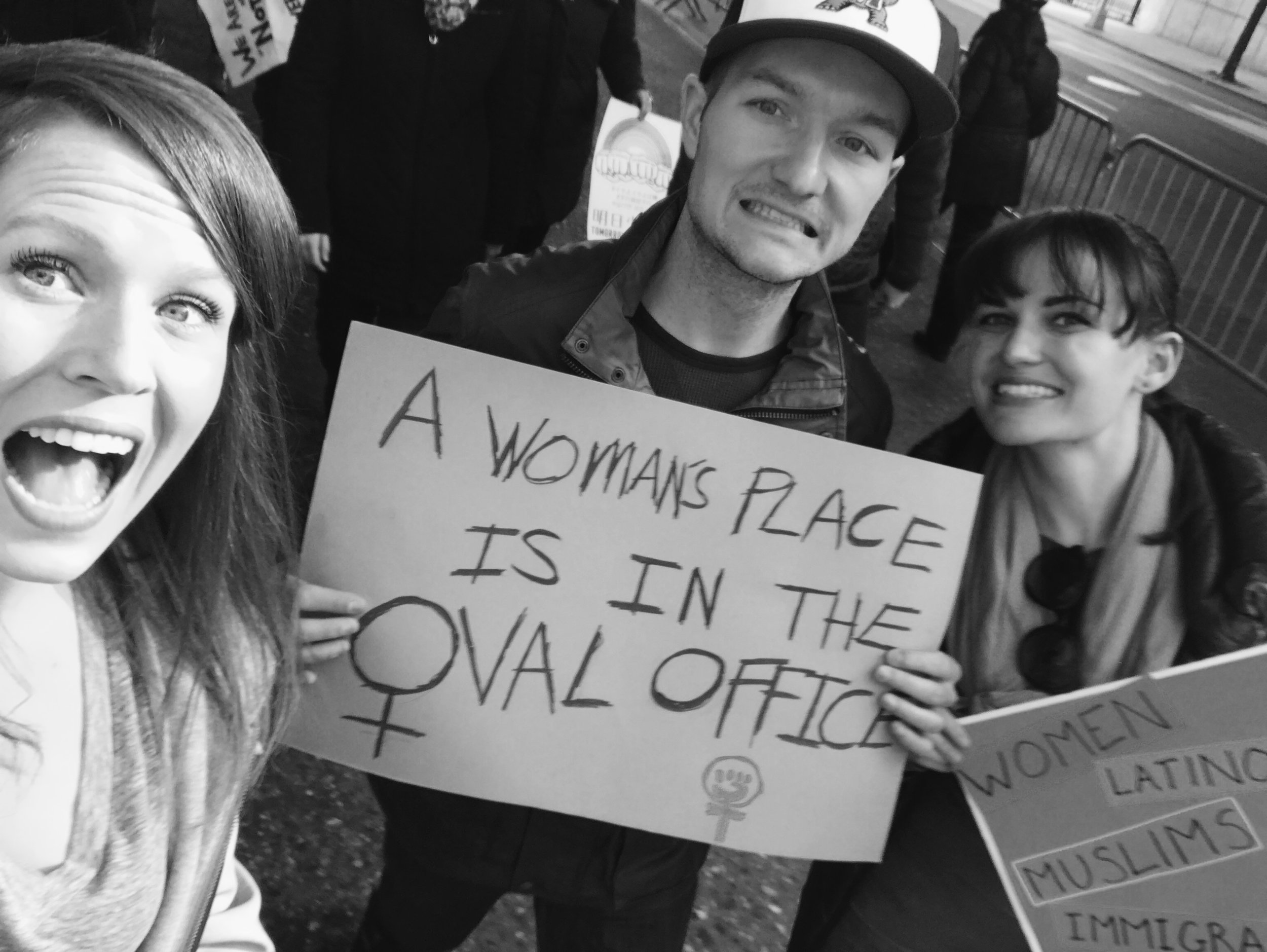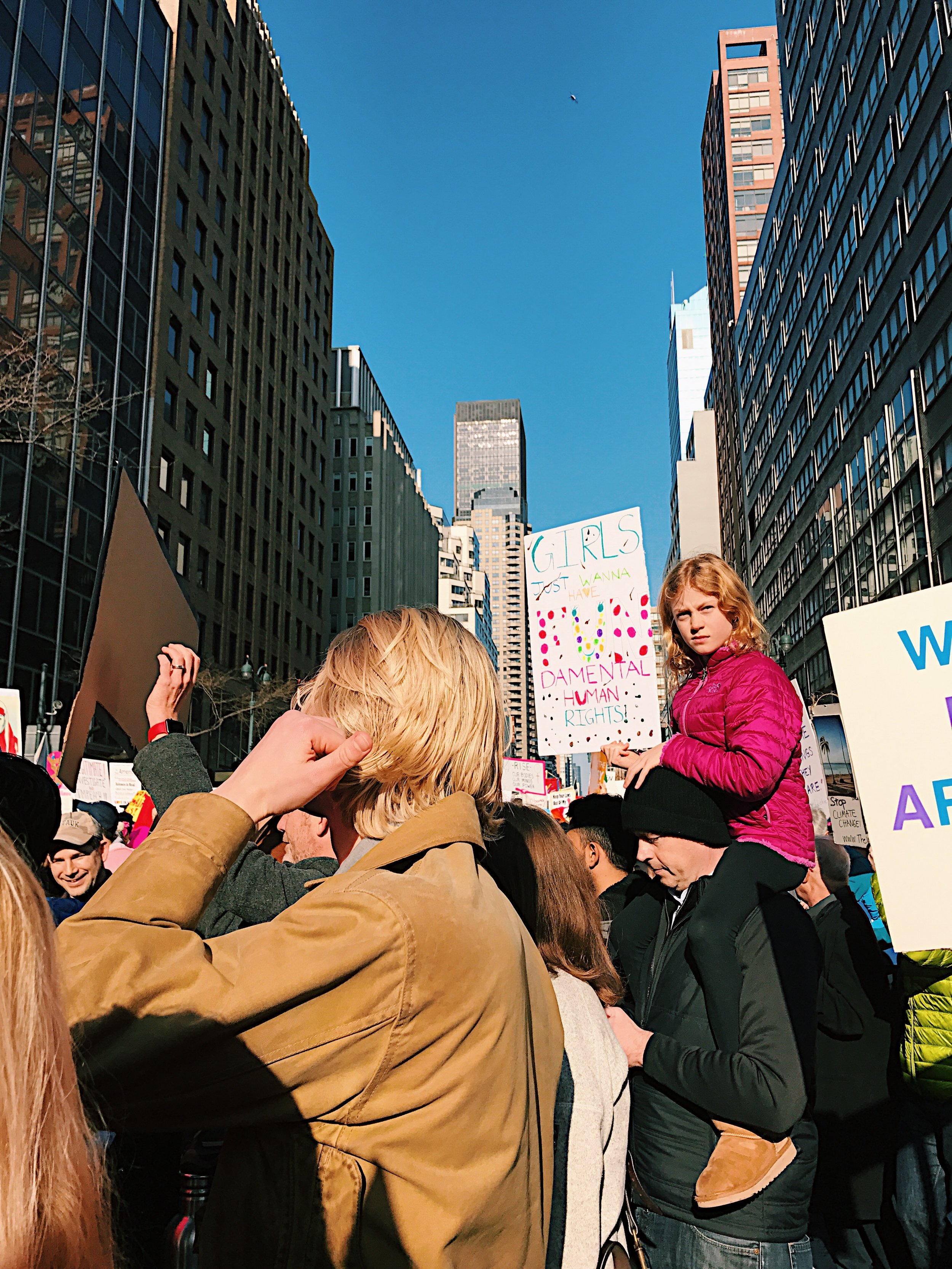"Where are you looking next?"
My husband, our neighbor, and a friend who lives down the road are all perched on a corner of our apartment's roof sipping wine and whiskey. It's a clear night, but a storm front is making its way through NYC. We have about 30 minutes left before the rain will interrupt our evening.
City dwellers have several types of neighbors. And in New York, since we live right on top of each other, these strangers intrinsically become a part of our lives—whether we like it, or not.
In Astoria, I had both pesky and enjoyable neighbors. Sabina and I shared a kitchen wall on the top floor of a three-story walkup. She lived next to me for a solid year before we developed any sort of relationship beyond, "Hi, how are you." By the time she gave birth to her first child, I was close enough to be invited to the baby shower. Our relationship was pleasant; we weren't in each other's business, but we liked to gab in the hallway about rent hikes and the delayed N train.
One apartment building over was my slightly terrifying neighbor. Meet Payasito, a Latin American clown with a motorcycle and a painted van, complete with several circus-themed mannequins that sat in the passenger seat. This odd man walked around in a wife-beater with half a painted face on Saturdays, yelling at his yappy, little poodle while he loaded props into his decked-out vehicles.
Payasito installed cameras all over the outside of his home, most likely because local teens messed with his clown paraphernalia. He also had the annoying habit of trying to flirt with anything in a skirt, so I avoided conversation when possible. His redeeming trait? One night my roommate and I had captured a giant cockroach about the size of my pointer finger with a folder and a glass cup. The bug hissed and whirled about, popping up its wings as if to say, "I dare you to try and flush me!" So we took it outside. Good ol' Payasito heard the commotion, swiftly picked up the glass, flipped over the folder, and repeatedly smashed the ill-fated insect to pieces. Turns out clowns with probable anger issues are good for something.
In the East Village, I didn't know many of my immediate neighbors. The apartment complex was more transient and nearly triple the size of my place in Queens. But 7th Street was far from lonely. I had playmates scattered throughout the entire neighborhood, and my roomy was an old family friend.
Our Super, Igor, greeted us every morning in his Ukrainian accent and tossed out gems like, "Don't work too hard!" or "Where are you going? Work? Ehh." On 2nd Avenue an old Polish immigrant sat outside of his bakery, rain or shine. If he was in a good mood, he'd nod in your direction. And in the little park by the F train was a man who collected compost for some NYC program. He would say "good morning" to commuters whether they had eggshells or not. I loved this strange community of familiar faces.
Brooklyn has been my home for a little over a year. Just now am I starting to recognize my neighbors on the street—but I know their movements and preferences quite well. Our current apartment isn't insulated, so every sound is prevalent. For example, I know my upstairs neighbor watches "Game of Thrones" and plays video games after dinner.
A few of our close friends live two blocks over, and another collection of our community lives one subway stop away. In New York, it's rare and yet so important to know people nearby. Want to go brunch? No Uber needed. Running some errands? Maybe your friends will, too. Nightcap on a Tuesday? Sure, why not. It's like college living, without the homework.
"Where are we looking next? Mostly nearby in Brooklyn," my husband answers. I'm jolted back to our conversation on the roof. A few raindrops are making their presence known.
Ryan and I will most likely have to move apartments in Spring. Our building has been sold and will either be torn down or converted into pricey condos we can't afford.
Wherever we end up next, I hope I get to know my neighbors.
And I hope my current community is nearby.
And I hope my friends in Queens will still come visit.
New York City is a much more enjoyable town when you can share your sometimes strange and difficult urban world with other humans who understand it. So have a glass of whiskey with a stranger on a roof, and work to live near those you adore.
The view from our Brooklyn rooftop.
“I have an affection for a great city. I feel safe in the neighborhood of man, and enjoy the sweet security of the streets.”
